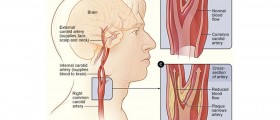How do the terms "minimal" and "moderate" blockage equate to a percentage value ?
Loading...
Hello, guest.
Carotid duplex bilateral testing is a non-invasive imaging test that combines two techniques: ultrasound imaging and Doppler ultrasound. This test is commonly performed to evaluate the blood flow in the carotid arteries, which are the major arteries in the neck that supply blood to the brain.
When interpreting the results of a carotid duplex test, certain terms such as "minimal" and "moderate" blockage may be used to describe the degree of narrowing or stenosis in the carotid arteries. However, it's important to note that these terms can be subjective and may vary slightly depending on the specific medical professional or institution.
Typically, the degree of carotid artery stenosis is expressed as a percentage based on the narrowing of the artery's diameter compared to its original size. The most commonly used grading system for carotid artery stenosis is the North American Symptomatic Carotid Endarterectomy Trial (NASCET) criteria. According to NASCET, the percentage values associated with different levels of stenosis are as follows:
- Minimal stenosis: Less than 50% narrowing of the artery's diameter.
- Moderate stenosis: Between 50% and 69% narrowing of the artery's diameter.
- Severe stenosis: Between 70% and 99% narrowing of the artery's diameter.
- Total occlusion: Complete blockage of the artery.
It's important to remember that the interpretation of carotid artery stenosis should be done by a qualified medical professional, such as a vascular specialist or radiologist, who can assess the imaging results in conjunction with your medical history and symptoms. They will be able to provide you with the most accurate assessment of the degree of blockage based on the specific criteria used in their practice.
Loading...
















